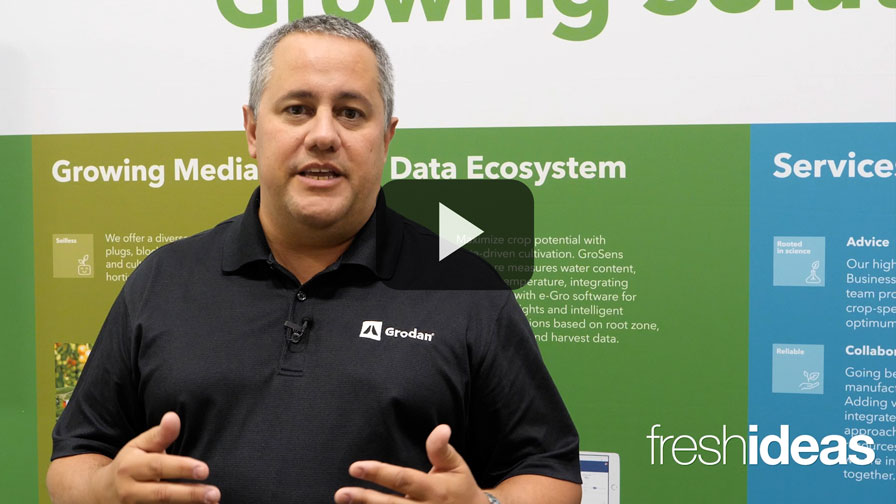Five Green Roof Questions With Twixwood’s Mike Edelbach
GG: Can you tell us about the Eco-Roofs modular system you designed and why you were interested in green roofs in the first place?
ME: We’re a larger groundcover nursery. Starting probably 10 years ago many of our different customers started asking for plugs to put up green roofs for the built-in-place systems. We started there and over the years some of our customers kept telling us we needed to do something with a tray system. There were just a few people out there doing these tray systems and they were selling them for an incredible amount of money. They were just plugs of sedums put in a tray and thrown onto a rooftop. The majority either died or had to be replanted multiple times.
Eco-Roofs formed as a company in 2008. We started doing research on trays and how to do this back in about 2006. We tried some different designs. We worked with different manufacturers on coming up with a tray that would do what we hoped it would do. We were looking at it more from a nursery perspective than a roofing perspective, with the goal being the plants needed to look good the day they went on the roof. No one should spend the money they’re spending on a green roof and have to wait two, three or four years to see green.
GG: Does Eco-Roofs get involved in individual projects beyond the production and delivery of its system?
ME: Eco-Roofs does go out and sell but we do not directly install. We don’t want to get into competition with our customers. There are some companies out there who sell and do the installations. We do not. We get the product to the job site and they take over. We will have a person on hand to work with them, help out with any situations and verify everything is ready to go on the roof.
Many of these guys come to us and say we want something better. They say, “We know you can grow a heck of a groundcover, so why don’t you do this with these rooftop trays?” If anything, we kick ourselves because we didn’t jump into it faster. We were spending a couple years trying to determine whether it’s a fad to stay or whether it was going to go away.
GG: Do you see interest in green roofs going away?
ME: I don’t see it going away at all. Last year, we probably did fewer quotes than the year before but I would say at the end of the day we probably installed just as much as the year prior. Things are more last minute now. Everybody is quoting and re-quoting looking for the best dollar.
GG: How competitive is the green roof industry now?
ME: It’s very competitive. It became competitive very quickly. Four or five years ago, these things were selling for $18 to $20 a square foot. Our pricing, depending on the volume we buy, is $8.40 to $11.50 a square foot depending on how large or complicated it is. That’s obviously a long way from $18 to $20.
We have to make sure we could produce these economically before we committed. We were pretty sure the prices were going to fall pretty quickly. I think the volume will go up if the prices continue to come down. It’s very expensive to put up a green roof.
GG: Besides more affordable pricing, what else needs to happen to increase the number of green roof opportunities for growers?
ME: Right now when you look at a tray system, it’s primarily sedums in those trays. That’s great in areas where they’re putting green roofs up solely for the benefits of a green roof. You’re controlling the amount of water that’s running off; you’re helping to cool off the building. But nobody’s seeing it. Sedum’s the perfect fit there.
We’ve done some on condominiums where the upper floor can walk out onto the roof and walk into a park-like setting. Sedums are cool and they’re cooler than a black roof, but perennials would add something to it. To do that, you really need to be in 6 inches of soil or deeper. There are certainly systems out there that have that.










